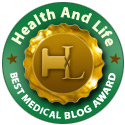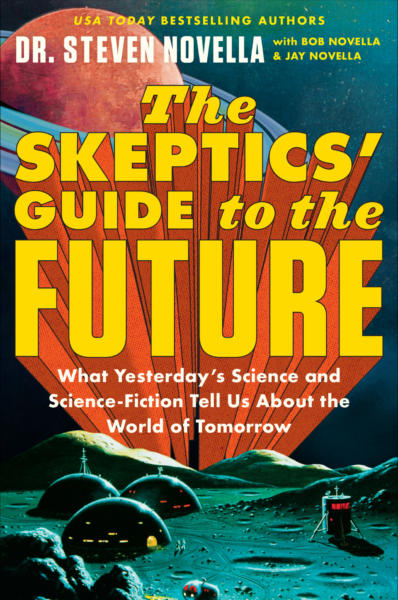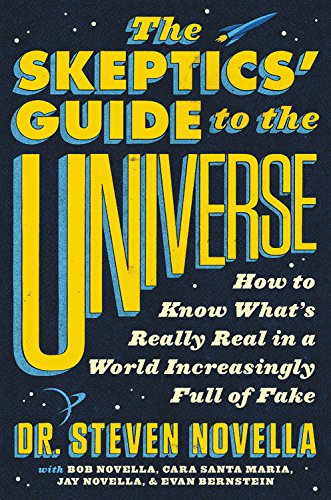Mar
31
2014
Almost weekly I see a new press release about an acupuncture study claiming benefits. While I have written extensively about acupuncture previously, and will continue to cover the topic, I can’t cover every little study that comes out. Most of the studies are utterly useless – they contain no control group, they are effectively pilot studies, they are of “electroacupuncture” (which is really just transdermal electrical nerve stimulation pretending to be acupuncture), or they are looking at some dubious biomarker rather than objective clinical outcomes.
Occasionally, however, an acupuncture study deserves a mention, in this case because it is particularly abusive.
Rachael Dunlop, my skeptical colleague from down under, sent me a report of an acupuncture study performed in Melbourne. News outlets are reporting the study at face value, in typical gushing terms, stating that “acupuncture is just as effective as drugs in treating back pain and migraine.”
It seems to me that this is the actual purpose of such studies – to produce positive news coverage. They are not designed to actually answer the question of efficacy.
Continue Reading »
Sep
03
2013
One interesting effects of social media is that news items can have a second life – someone posts an item from years ago on their Facebook page, for example, and it makes the rounds as if it’s something new. Those of us who spend time analyzing science news reports and correcting misreporting or misleading information often refers to such items as zombies. They keep rising from the dead and have to be staked all over again.
The World Health Organization (WHO) 1996 report on acupuncture has recently risen from the grave and is haunting online acupuncture discussions. The fact that the data on which this report is based is over 17 years out of date does not seem to be a problem for those referencing it. The allure seems to be the apparent authority of the WHO.
The WHO report is generally positive toward acupuncture, reviewing clinical evidence and listing many conditions for which acupuncture is apparently effective. The report, however, is also deeply flawed.
Continue Reading »
Mar
12
2013
As Carl Sagan observed, “randomness is clumpy,” which means that sometimes, for no specific reason, I write two or more blog posts in a row about the same topic. Perhaps it’s not entirely random, meaning that when a topic is being discussed related news items are more likely to come to my attention.
In any case, there was recently published yet another meta-analysis of acupuncture, this time specifically for low back pain. The findings and interpretation add to the pile of evidence for two important conclusions:
1 – Acupuncture does not work.
2- Acupuncturists refuse to admit that acupuncture does not work.
I would further infer from these two unavoidable conclusions the dire need for a greater understanding of the core principles of science-based medicine.
Continue Reading »
Mar
11
2013
Sometimes the targets of our skeptical analysis notice, and they usually are not pleased with the attention.
Last year the Acupuncture Trialists Collaboration published a meta-analysis of acupuncture trials in which they claim, “The results favoured acupuncture.” The report was widely criticized among those of use who pay attention to such things. In my analysis I focused on the conclusions that the authors drew, rather than their methods, while others also had concerns about the methods used.
The authors did not appreciate the criticism and went as far as to publish a response, in which they grossly mischaracterize their critics and manage to completely avoid the substance of our criticism.
To review, the original meta-analysis concluded:
Acupuncture is effective for the treatment of chronic pain and is therefore a reasonable referral option. Significant differences between true and sham acupuncture indicate that acupuncture is more than a placebo. However, these differences are relatively modest, suggesting that factors in addition to the specific effects of needling are important contributors to the therapeutic effects of acupuncture.
Continue Reading »
Feb
02
2012
This is yet another installment in my series on how so-called “alternative” medicine thrives under a double standard – a bizarro world where the rules of science and logic are suspended in favor of uncritical promotion. The American Headache Society (AHS) just sent out a press release endorsing acupuncture for migraine headaches. They write:
Mt. Royal, NJ (February 1, 2012) – When it comes to treating migraine, so-called “sham” acupuncture (where needles are inserted only to a superficial depth in the skin and not in specific sites) and traditional acupuncture where needles are inserted in specific sites, both are effective, according to the American Headache Society (AHS).
Citing publicity surrounding a recent Canadian study comparing the effectiveness of the two types of acupuncture, David W. Dodick, MD, AHS president, said both types of acupuncture, particularly when electrical stimulation is involved, may work to release endorphins that are important in controlling signals of pain and inflammation.
“How much of a benefit sham acupuncture can have on the release of these chemicals is unclear,” he said. “This suggests the benefits of treatment may not depend on the exact technique of acupuncture and needle positioning.”
Studies show that sham acupuncture is as effective as true acupuncture, and Dr. Dodick concludes from this that both work. The proper scientific interpretation of this result is that the treatment (acupuncture) is no different than placebo (sham acupuncture) and therefore has only a placebo effect. Only in CAM world can you take a negative result and then spin it into a positive result like this. Science is all about controlling for variables, and when you control for the variable of acupuncture (inserting needles into acupuncture points) it does not work.
Continue Reading »
Aug
26
2011
Here is yet another study claiming to show “how acupuncture works” when in fact it does nothing of the kind. The bias of the researchers is so obvious in this study it’s astounding that it was published in a peer-reviewed journal. Of course, the mainstream media is dutifully reporting the biased claims of the researchers without any independent verification or analysis.
There are numerous fatal problems with this study. The first, like in many physiological studies that purport to be about acupuncture, is that the connection to acupuncture is tenuous. The researchers claim that they are testing the effects of an acupuncture needle – but what makes a needle an acupuncture needle? Other such studies were ultimately just seeing the effects of local tissue trauma. The fact that this trauma was induced by an “acupuncture needle” is not necessarily relevant.
This study is far worse, because it is simply using the acupuncture needle as a mechanism for inducing an unrelated physiological stimulus. This is similar to “electroacupuncture” where electrical current is applied through an acupuncture needle – what you are actually studying is the effects of electricity, not “acupuncture.”
Continue Reading »
Mar
25
2011
Here we go again. What if I said to you that drug X and a placebo of drug X (i.e. a placebo) worked better for the relief of a subjective symptom than no treatment, but no different from each other? I conclude from this that the “drug cohort” (whether the real drug or the placebo of the drug) did better than the no-treatment control group. This may mean that the drug works through a general care effect and patient expectancy.
Let’s say, rather, that a pharmaceutical rep were saying this about their latest drug. It would be obvious that the drug company decided to use some Orwellian new speak in order to contrive a sentence in which they get to say that their drug works (by a general care effect). And in order to obscure the fact that their drug worked no better than placebo, they refer to both the drug and the placebo as the “drug cohort” and compare them both to a no-treatment group. The “drug cohort” had an effect.
In the real world of scientific medicine (not the bizarro world of CAM), when a treatment works no better than the placebo control we conclude that – the treatment does not work. Looking past all the obvious spin above, a more honest conclusion would simply be – drug X does not work for the tested symptom. Period. There is no “drug cohort”, and you don’t have to confuse the reader by calling placebo effects a “general care effect” or “expectation.” These are placebo effects.
Continue Reading »
Aug
20
2010
I have written numerous blogs both here and on SBM about the acupuncture literature, which clearly shows that acupuncture, for any indication, is nothing but an elaborate placebo. Rigorous studies of acupuncture that actually try to isolate variables have shown that it does not matter where you stick the needles or even if you stick the needles – those variable do not have any specific effect. Acupuncture points and meridians are an illusion – nothing but superstition.
But there does appear to be a significant placebo effect, in addition to non-specific effects from relaxation and therapeutic attention, to the ritual of acupuncture. Does this mean “fake acupuncture works?” No – it means acupuncture does not work, but there are known placebo effects from the process of getting treated.
Now we have yet another study that supports the conclusion that acupuncture is just a placebo – but with an added element that is very interesting. Researchers compared traditional Chinese acupuncture (TCA) with sham acupuncture (non acupuncture points, shallow needle insertion) and another control group with no treatment for knee osteoarthritis. The researchers also did one very interesting thing, and one very sloppy and annoying thing (in my opinion). The sloppy thing was to use “electroacupunture” – which isn’t pure acupuncture. It’s acupuncture plus transcutaneous electrical nerve stimulation, which is an already proven modality for pain. In the TCA group they gave full “electroacupuncture” and in the sham group they gave less stimulation – enough to serve as an active placebo but not enough to have any effect.
Continue Reading »
Jul
29
2010
Here is the conclusion quoted from a recent New England Journal of Medicine (NEJM) review article on acupuncture for back pain:
As noted above, the most recent wellpowered clinical trials of acupuncture for chronic low back pain showed that sham acupuncture was as effective as real acupuncture. The simplest explanation of such findings is that the specific therapeutic effects of acupuncture, if present, are small, whereas its clinically relevant benefits are mostly attributable to contextual and psychosocial factors, such as patients’ beliefs and expectations, attention from the acupuncturist, and highly focused, spatially directed attention on the part of the patient.
Translation – acupuncture does not work. Why, then, are the same authors in the same paper recommending that acupuncture be used for chronic low back pain? This is the insanity of the bizarro world of CAM (complementary and alternative medicine).
Continue Reading »
Jul
06
2010
I used to think that bloodletting was a Western cultural invention – part of Galenic medicine involving the balancing of the four humors, one of which being blood. Bloodletting faded away with the advent of science-based medicine in the 19th century. But it turns out that bloodletting was common throughout ancient cultures and not unique to the west.
In fact acupuncture was originally a form of bloodletting – the “needles” were really lances and the acupuncture points locations over veins to be opened. Chi, or the Chinese concept of the life force, was believed to be partly in the blood, and bloodletting could be used to free the flow of chi. This was closely related to the Galenic concept of using bloodletting to free the flow of static blood in the tissue.
For example, in the ancient medical text of Suwen, we find:
When heaven is warm and when the sun is bright,
then the blood in man is rich in liquid
and the protective qi is at the surface
Hence the blood can be drained easily, and the qi can be made to move on easily…
Continue Reading »






